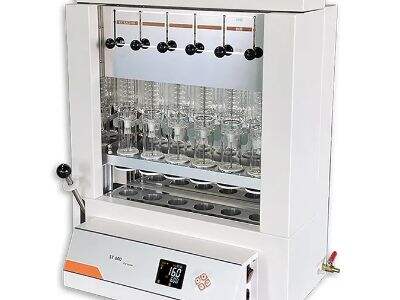Как да разберем калибрирането на водата за тестване
Но преди да открием как можете да калибрирате своя анализатор за качество на водата Labtech, първо трябва да разберем защо това е толкова важно. Калибриране: актът на сравняване на измерванията, направени от вашето устройство с известна референтна стойност. Това помага да се гарантира, че вашите измервания са точни. Това е като да проверявате линийката за точност, преди да измерите нещо с нея. Калибрирането е изключително важно, защото гарантира, че показанията на водата, които получавате, са точни. Когато правите калибриране, знаете, че числата са правилни. то литиево-йонен селективен електрод също така ви позволява да проследявате промените в качеството на водата във времето, информация, която е ключова за гарантиране, че нашата вода е безопасна и чиста.
Как да калибрирате вашия анализатор за качество на водата
Сега, как да калибрираме по подходящ начин вашия анализатор за качество на водата Labtech? Все едно следваш рецепта; всяка стъпка е важна:
Стъпка 1: Изберете вашето решение за калибриране. Тези стъклен електрод цена разтворите за калибриране са високо пречистени течности, съдържащи известни количества от различни съставки на качеството на водата, като рН и проводимост. Искате да сте сигурни, че имате правилното решение за вашия анализатор. Вашите показания няма да са точни, ако имате грешния.
Стъпка 2: Калибрирайте вашите решения. Следвайте внимателно всички указания за смесване. Концентрацията на стандартния разтвор трябва да е точна. Не трябва да е нито прекалено меко, нито прекалено силно. Може да доведе до грешни резултати, ако не се смеси правилно.
Стъпка 3: Включете вашия анализатор за качество на водата. Настройте го правилно и след това го включете. Това е като да включите компютър - трябва да проверите дали всичко работи, преди да го отворите.
Стъпка 4: Поставете вашите електроди в първия разтвор за калибриране. Разтворът трябва да е достатъчен, за да покрие равномерно целия електрод. Това гарантира, че показанията са правилни.
Изчакайте показанието да се стабилизира — След като показанието се установи, отбележете резултата. Дайте малко време на анализатора да се установи и да даде стабилно показание. Освен това не бързайте с тази стъпка - това е критично! Запишете измерването, след като показанието се стабилизира. Това е съществен аспект от процеса.
Стъпка 6: Потопете вашия електрод във втория разтвор за калибриране и следвайте стъпка 5 отново. Това осигурява начин да проверите вашите показания, за да сте сигурни, че са последователни.
Припокриващи се показания с известни стойности за кръстосана препратка. В разтвора за калибриране трябва да покажете вашите показания за двата разтвора и след това да ги сравните с известните стойности. Ще трябва да следвате инструкциите, за да го приведете в съответствие с известните стойности, ако показанията ви не съвпадат. Това действие е от решаващо значение, за да се уверите, че всичко е правилно.
Стъпка 8: Накрая изплакнете енергично електродите си. След всяко калибриране, правилното почистване на инструментите въз основа на източниците е важно; в противен случай разтворът ще се смеси един с друг. Подобно е на миенето на ръцете след хранене; поддържа чиста ситуация и избягва кръстосано замърсяване.“
Съвети за точно калибриране
Полезни съвети за калибриране за най-добри резултати
Съвет 1: Използвайте новоприготвени разтвори за калибриране. Не използвайте разтвори с изтекъл срок на годност. Точно както старата храна може да няма добър вкус, остарелите решения също може да не ви дадат реални показания.
Съвет #2: Използвайте специфичен разтвор за калибриране за вашия анализатор Избягвайте грешки, като съпоставите разтвора с вашия анализатор. The рефрактометър грешното решение може да доведе до грешни резултати.
Съвет 3: Не бързайте. Отделете необходимото време за всяка стъпка за добри четения. Не бързаме; бързането води до грешки, а ние не искаме това.
Съвет 4 — Почистете електродите. Те трябва да са чисти от мръсотия или друго вещество, което потенциално може да промени показанията. Камерата съдържа чисти електроди за осигуряване на точни резултати.
Съвет 5: Уверете се, че избягвате въздушни мехурчета, когато поставяте електродите в разтвора. Наличието на въздушни мехурчета може да попречи на измерванията, така че внимателно потопете електродите в разтвора, като се уверите, че няма уловени въздушни мехурчета.
Грешки — ` Процент грешки при корекцията
Някои често срещани грешки, които трябва да избягвате при калибриране, включват следното:
Грешка 1: Използване на разтвор с изтекъл срок на годност Преди да използвате разтвор за калибриране, винаги проверявайте срока на годност. Разтворите с изтекъл срок на годност ще дадат грешни резултати, така че винаги е по-добре да консумирате пресни.
Грешка 2: Не изплакване или изсушаване на електрода след почистване. Уверете се, че правилно изплаквате електродите с дейонизирана вода и ги подсушавате точно преди калибриране. Това предотвратява влиянието на останалите вещества върху резултатите.
Грешка 3: Смесване на разтвора в неправилен ред Не забравяйте да смесите според инструкциите и в правилната последователност. Комбинирайте ги неправилно и рискувате тази неправилна концентрация.
Грешка 4: Не се дава време на електродите да се стабилизират. След като електродите се поставят в разтвора, те се нуждаят от известно време, за да се утаят. Ако не им дадете достатъчно време, може да имате лоши показания.
Грешка 5: Обръщане на проводниците на електродите. Просто избягвайте грешни показания, като знаете кой източник кой е. Това е като да знаете, че щепселът влиза в правилния контакт.
Необходимостта от редовно калибриране
Калибрирането на анализатора за качество на водата Labtech е много важно да се извършва редовно. Те ви дават точни, постоянни показания. Колко често трябва да калибрирате отново зависи от това колко често се използва анализаторът и възможността за повторна употреба на разтворите за калибриране. Честото калибриране ви позволява да откриете малки промени в качеството на водата, които иначе биха могли да останат незабелязани. Което е от решаващо значение за поддържането на водата ни безопасна за пиене и други цели.
Изводът Един от най-наложителните фактори за получаване на точни показания от вашия анализатор за качество на водата Labtech е правилното му калибриране. Спестява време; помага ви да видите тенденциите в качеството на водата.“ Това гарантира, че вашият анализатор функционира правилно и ви предоставя точни показания, което му помага да работи по-дълго. Имайте предвид тези стъпки и съвети, докато калибрирате своя анализатор. Надяваме се това ръководство да ви помогне да калибрирате своя анализатор за постоянни и надеждни резултати!
 EN
EN
 AR
AR BG
BG CS
CS DA
DA NL
NL FR
FR DE
DE EL
EL HI
HI IT
IT JA
JA KO
KO PL
PL PT
PT RO
RO RU
RU ES
ES SV
SV CA
CA TL
TL IW
IW ID
ID SR
SR SK
SK VI
VI ET
ET HU
HU TH
TH TR
TR FA
FA AF
AF MS
MS GA
GA MK
MK BN
BN BS
BS LA
LA MN
MN NE
NE

